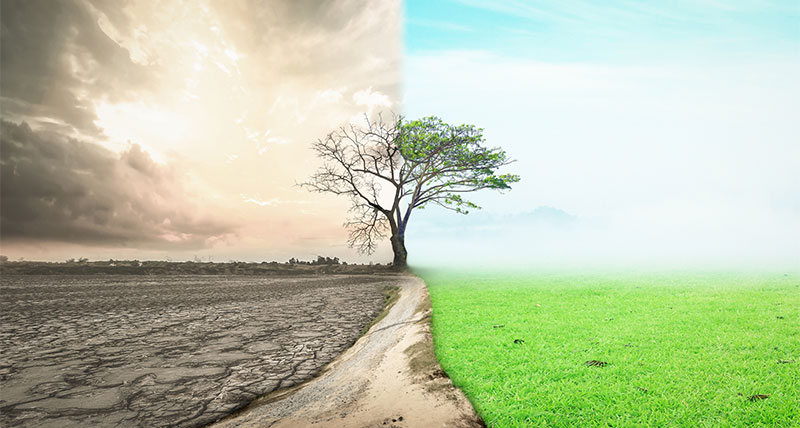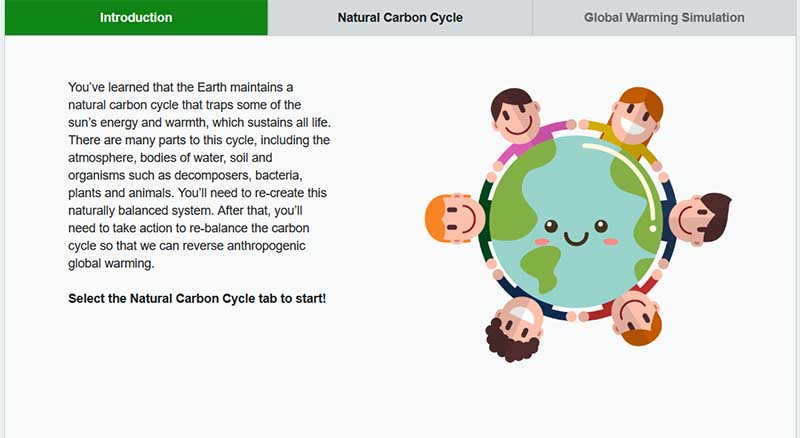
Climate change and the media
Climate change, we hear about it through friends, family, and the media. Media provides us with updates and new information relating to climate change. In fact, a number of professions, such as weather reporters, news reporters, and media guest speakers, such as environmental specialists, share knowledge with us in relation to climate change. People in various media careers related to climate change are also knowledgeable on the key concepts we will be covering in this learning activity. Let’s get started to learn more!
Exploring climate change
In the previous learning activity, you learned how the climate system works and how human activities are enhancing greenhouse effects. You also examined the evidence indicating climate change is already happening. But how bad can it get? What amount of climate change is possible? What amount is likely? As you work through the following learning activity, try and keep these questions in mind.
In this learning activity, you will learn how scientists make predictions about future climates, and you will examine some of the controversies around the issue. You will also investigate some possible solutions and the ways which societies around the world are beginning to tackle the problem.
Some people may feel that their actions will not change anything. However, even though the changes made by each individual seem small, they have significant effects when multiplied by millions of people. People have created this problem and people can solve it. By solving the problem we will be able to preserve our natural surroundings.
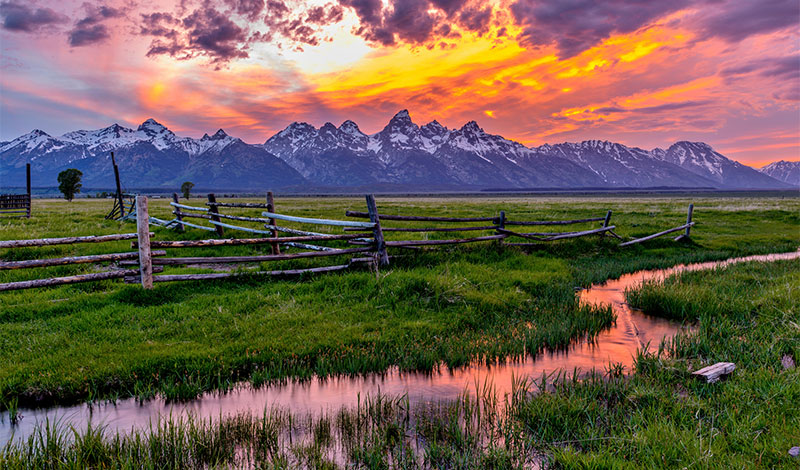
Transferable skills
Global citizenship and sustainability
As you work through the following learning activity keep in mind the transferable skills of Global Citizenship and Sustainability. As you engage in the following activities by discussing with your peers and reflecting on your responses you are beginning to formulate responsible decisions and actions that support quality of life for all, now and in the future.
The Action is separated into two parts:
Action: Part 1 - Predicting our future climate
Action: Part 2 - Understanding the information about climate change
Action: Part 1- Predicting our future climate
How much will the climate change, given the amount of greenhouse gas in our atmosphere now? What will happen if we add even more greenhouse gases in the future?

These are difficult questions to answer. Reconstructing past climates is hard enough; predicting future ones is even harder. Climate depends on many interrelated factors. Scientists are working hard to understand the climate system and predict future climates based on different levels of greenhouse gases in the atmosphere.
Like all science, this process involves collecting and analyzing data, determining relationships, and making predictions. These predictions are then tested against new evidence. If the new evidence doesn’t support the prediction, then the scientists collect more data, re-analyze the relationships in the data, and revise the predictions.
This process of science is not controversial as it emphasizes an important aspect of science, it is dynamic. The process of making predictions, testing them, and if necessary revising them based on new data, is called the scientific method. This same scientific method has produced medical cures, sent humans into space, and created cell phones. But because climate change is such a political and emotional issue, some people challenge the scientific process behind it. To understand the controversy, you must understand how scientists make climate predictions

Modelling climate change
As the concentration of greenhouse gases increases, the amount of heat trapped by the atmosphere also increases. More heat means more transfer of heat around the globe. The result is climate change. But how much will it change, how fast, and where will the change be most dramatic?
To answer questions like these, climatologists use sophisticated computer programs to model the earth’s climate. These computer programs use quantitative methods to simulate the interactions of the atmosphere, oceans, land surface, clouds, and ice.
These computer programs are called models because they represent the structure and function of the process in a simplified way that allows us to examine how the system works. You may be familiar with physical scale models—small versions of a real object. Engineers often build scale models of airplanes and cars to test out how they might handle before building the real thing. Architects build scale models of proposed buildings to explore how they might interact with the surrounding landscape. Computer models perform a similar function. But instead of building a physical object to test out possible scenarios, the computer model uses equations to connect parts of the system.
The following video describes how computer models are used by scientists to help them understand how temperature in different regions of the world may change as carbon dioxide increases.
While viewing the following videos, take some time to jot down a few notes as this will help you organize your thoughts for upcoming activities.
Join the discussion
After you have viewed the two videos, your teacher will place you in breakout groups in order for you to discuss with your peers the notes you recorded as well as your overall thoughts. You may choose to use the following guiding questions during your peer discussion:
- Why might it be useful to predict the Earth's climate years or even decades from now?
- Why do you think climate models are only able to provide an estimate on how climate might change?
Climate models
Climate models use computer programs to help us understand how the components of climate will react to changes in the other components. For a climate model to be successful at making predictions, it must consider the interactions among the many components of the climate system. Modelling these interactions can be complicated because of positive feedback loops and multiple effects. The following video explores how global climate models provide weather forecasts and climate projections.
Positive feedback loops
In positive feedback loops, the effect of a process amplifies that process. An example of a positive feedback loop comes from the albedo produced by snow and ice. The snow on the ground in the Arctic produces an overall cooling effect because it reflects sunlight back into space. However, if an increase in global temperature causes more Arctic snow to melt, then that albedo effect decreases. The exposed ground is darker than the snow, so it absorbs more heat from the sun, causing even more melting.
This is the positive feedback loop: a small amount of melting creates bare ground that causes even more melting. In this way, small changes in the amount of albedo in the Arctic can trigger rapid large- scale changes. Due to these feedback loops and triggers in the climate system, climate models can be very sensitive to small changes in conditions.
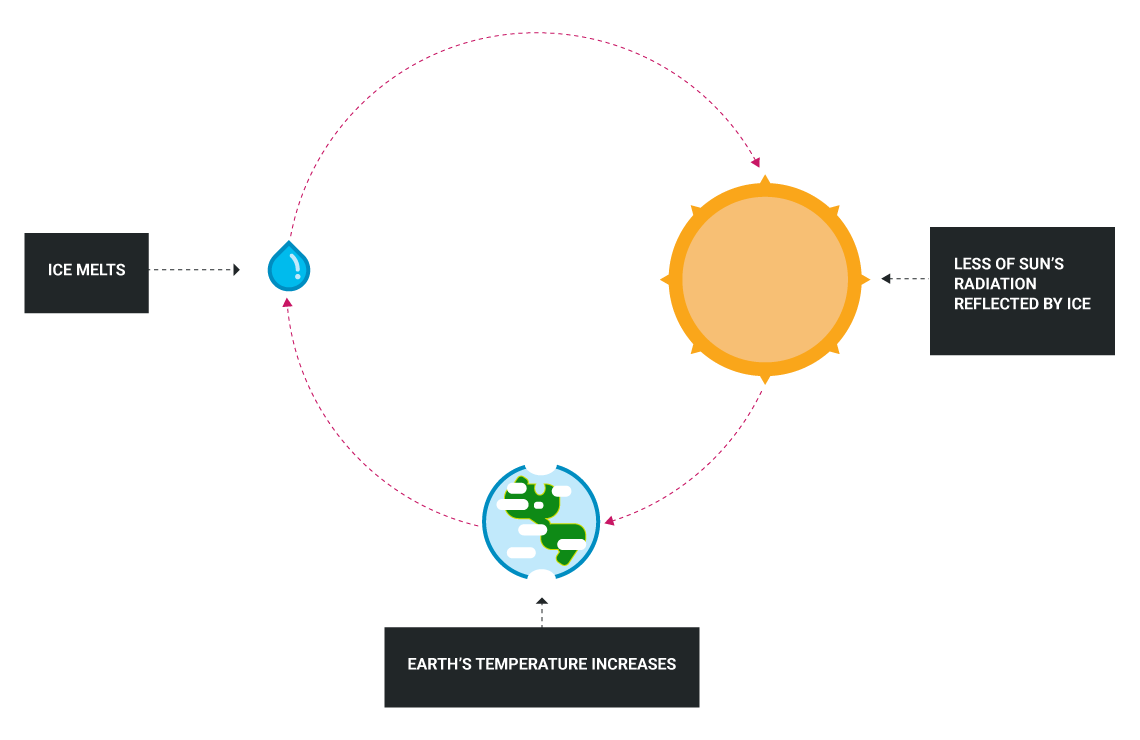
Positive feedback loop for the Albedo Effect
What makes a good climate model?
Climate models are judged on their ability to represent current climate patterns and match past climate changes. If the model can closely replicate what we know already happened, then we have greater confidence it can accurately predict what will happen. Though climate models are getting better, they still have some significant limitations. One is the way they model the dynamics of clouds.
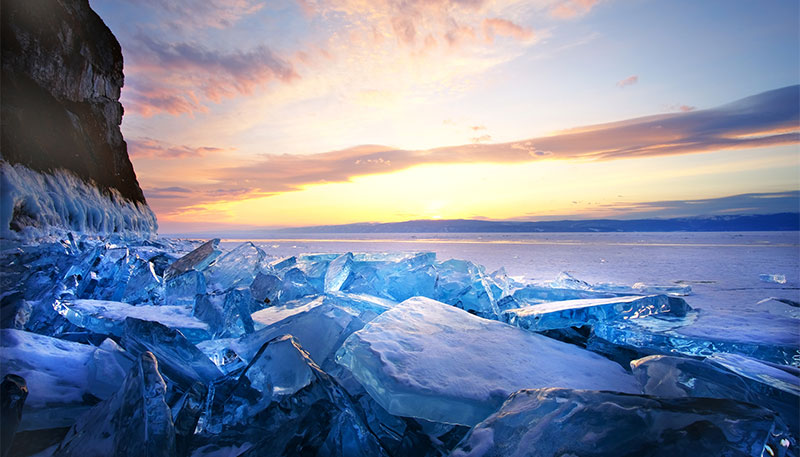
Clouds are an example of how multiple combined effects plus feedback loops can create complicated situations. The amount of cloud cover depends on many factors, including evaporation, sunlight, ecozone features, temperature, and precipitation. But cloud cover can also be involved in feedback loops with each factor; at the same time, each factor is also interacting with the other factors in complex ways. This intertwined series of interactions makes it hard to establish clear cause-and-effect relationships. Since the amount of cloud cover is very important in determining how much radiant energy gets reflected back into space, this complexity leads to larger uncertainties in climate prediction.
Despite the difficulties, climate models are powerful tools that are constantly improving. As more information becomes available and faster computers are developed, climate models get better at predicting future climates. The best climate models available predict that global average temperature will increase approximately 3°C within the next 50 years.
The heat will not be spread evenly over the globe. Tropical regions will experience less heating, while the polar regions may heat up 4 to 5°C.
Multiple effects
Sometimes one action can have multiple effects. For example, the average albedo of a snow- covered forest (35%) is about half that of a snow-covered field (70%). The field is nearly completely covered in snow, while many of the dark forest branches are left exposed and can still absorb sunlight. This means that the removal of forests at high latitudes should increase the albedo in winter and so help cool the earth. Some people have even suggested that this is one way to fight climate change.
However, there is more to this story. Trees are carbon sinks because they remove carbon dioxide from the air. If the trees were cut down, more carbon dioxide would be left in the atmosphere and global temperature would increase. So does cutting down the trees cool the air or heat it up? As both effects happen at the same time, the climate model has to be able to combine the multiple effects of cutting down the trees. This example involves only two effects from one factor. Often many factors need to be combined, each with its own series of multiple effects. This can make it hard to establish clear cause-and-effect relationships in the model.
Notebook
Check your understanding
As you read through the following questions, take the time to jot down your answers and once you feel confident compare your answers to the suggested answers in this learning activity.
How do changes in the amount of snow cover contribute to rapid climate change in the Arctic?
Snow reflects a lot of the sun of the atmosphere which helps keeps the Earth cool. As the snow melts, the Earth absorbs the heat from the sun which contributes the global warming.
Describe two features of the climate system that make it hard to develop predictive climate models?
The positive feedback loop (when the effect of a process is amplified by that process) and multiple effects (where one action produces two or more effects that combine in ways that make it difficult to predict).
Describe two ways to judge the quality of a climate model.
Climate models are judged on their ability to represent current climate patterns and match past climate changes. If the model can closely replicate what we know already happened, then we have greater confidence that it can accurately predict what will happen.
Action: Part 2- Understanding the information about climate change
Climate change is one of the most important environmental issues facing society. It is important to recongnize the impact that climate change has, not only on naturally occuring ecosystems, but also how it impacts people and their societies all over the world. With the scientific information that is contributing to our knowledge about climate change, it allows for better choices that are made such as reducing our carbon footprints, by choosing alternate sources of energy, rather than be dependent on fossil fuels.
This is a healthy debate, and one that objective scientific investigation can resolve. But this debate is no longer confined to just the scientific community, because it has a significant impact on the economy, and society, it is important to have an understanding of valid and accurate information that is presented in the public.

As with all scientific analyses, scientists use climate models to predict climate change within a range of estimates (sometimes called a confidence interval). Some people argue having a range of estimates means the science behind the models isn’t very strong because they can’t predict exactly what will happen. This is not true. Scientists always report a confidence interval around their predictions. Only if the interval is very large does it mean the model is not good at making predictions. As more research is done, the climate models improve; the boundaries around their predictions are getting smaller with every new analysis.
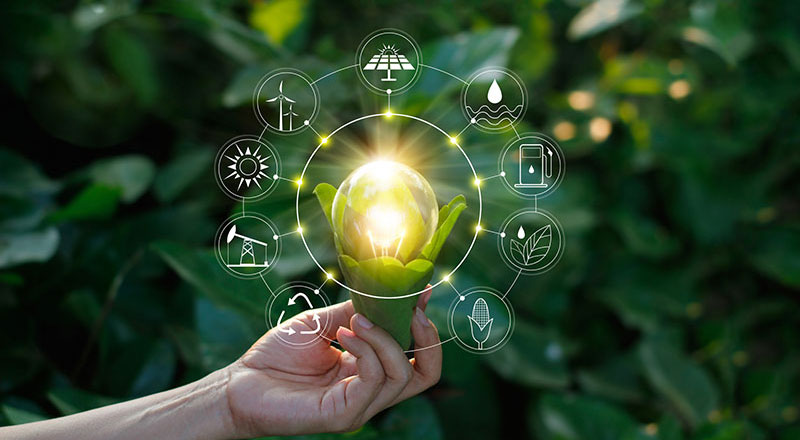
Another reason some people doubt the existence of climate change is that climate varies naturally. They argue whatever climate change we are experiencing now is only part of a natural cycle, so we don’t have to take any expensive action.
This is a healthy debate, and one that objective scientific investigation can resolve. But this debate is no longer confined to just the scientific community and because this is such an important issue with economic, social, and political consequences, the debate is being carried out on TV talk shows, in political campaigns, at work, and within families. So much information and misinformation is being spread around that it is not easy to get the facts straight.
Reliable sources of information
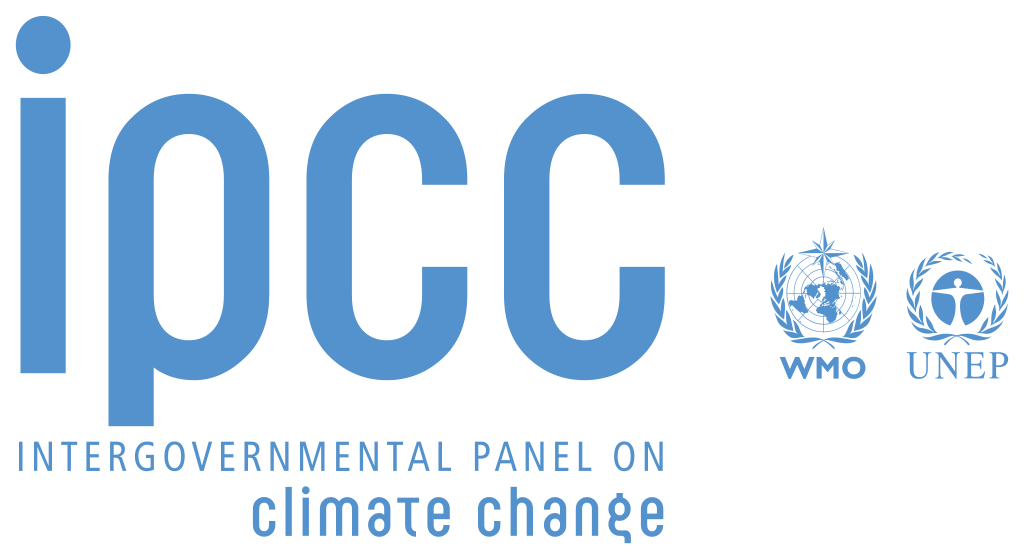
There is a lot of scientific work being done on climate change. Most of it is published in technical journals that the general public doesn’t read. To provide an authoritative source of information on climate change science that is available to everyone. In 1988 the United Nations set up the Intergovernmental Panel on Climate Change (IPCC). The IPCC is a scientific intergovernmental body run by the World Meteorological Organization (WMO) under the United Nations Environment Programme (UNEP).
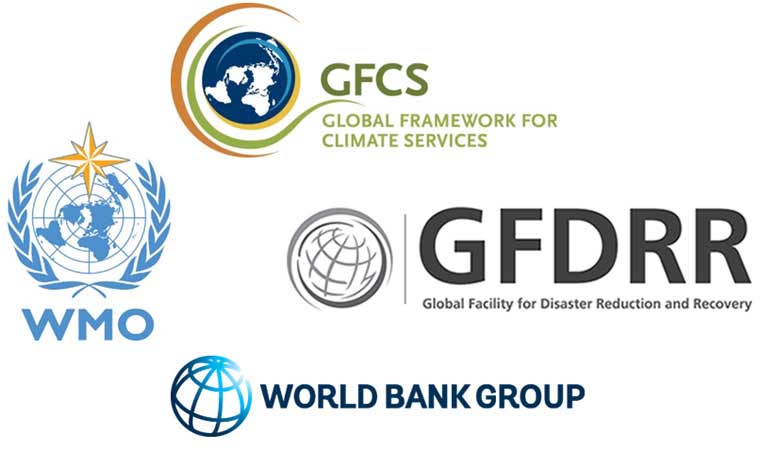
The IPCC publishes updates and small reports on developments in climate change several times each year. About every five years, the IPCC releases large status reports called Assessment Reports which summarize all the climate change science known to that point. The IPCC’s most recent Assessment Report was released in 2014 (called the “Fifth Assessment Report” or “AR5”).
This report conclusively states climate change in recent decades is not a natural occurrence, but rather the result of human activity. The report is very detailed and is available for free on the Internet (to search for this report use keywords such as “IPCC assessment reports”).
Fact: For its efforts, the IPCC was awarded the 2007 Nobel Peace Prize, shared with former U.S. Vice-President Al Gore for his work on climate change and the documentary An Inconvenient Truth.
Are scientists undecided?
Scientific organizations, like the Canadian Meteorological and Oceanographic Society and the Canadian Foundation for Climate and Atmospheric Sciences, agree with the IPCC’s conclusion that climate change in the last 50 years is mostly the result of human activity. But do all scientists agree? Some in the media have tried to show that climate change is very controversial in the scientific community, with little agreement about its causes or impacts. They argue until the scientists reach consensus, there is no point taking expensive actions that may not be justified. But how divided is the scientific community on this issue?
One scientist, Dr. Naomi Oreskes of the University of California, decided to take a scientific approach to answering this question.
As you explore the video of Dr. Naomi Oreskes, take the time to jot down some notes to help organize your thoughts for future activities.
If the scientists are in agreement, why do we hear media reports of a controversy? Some of this is due to misinformation supplied by groups with a political agenda. For example, some organizations have hired lobbyists to provide the media with stories that suggest climate-change science is controversial. Such media releases are one source of confusion. Blogs, political campaign ads, and reports from “think tanks” can also spread misinformation. It is important to be skeptical of all information and always consider its source, especially with an issue as politically charged as climate change.
Try it!
As you read through the following questions, take time to jot down your answers and compare your answers to the suggested answers.
Check your understanding of information and misinformation by answering the questions below. Select the correct answer, then press Submit to find out how you did.
You’ve learned that human activity is causing climate change. So, what can we do about it?

Steps towards a solution: Taking global action
Climate change is a global problem requiring a global solution. Since the atmosphere flows everywhere on the planet, places that don’t produce a lot of carbon dioxide still experience the problems it causes. The international nature of the problem was recognized decades ago. Since the 1980s, international meetings sponsored by the United Nations have been examining the problem and proposing solutions.
One of the most famous proposals came out of a UN-sponsored conference in 1997 in Kyoto, Japan. An agreement among the leading industrialized nations, the Kyoto Protocol called for every industrialized nation to reduce its output of greenhouse gas emissions by 6% below their 1990 levels by 2012. Canada signed this agreement, but the federal government withdrew from the Kyoto Protocol in December 2011. Both Canada and the United States were emitting greenhouse gases at much higher rates than they were in the 1990s, so meeting the reduction targets was not possible
Despite the Kyoto Protocol’s failure to reduce greenhouse-gas emissions, there are signs of progress. In the Paris Agreement, formed on December 2015, 195 countries signed the first ever legally binding global climate deal. This deal aims to keep the temperature level increase below 2oC and for all countries to come together every five years to discuss new ways of combat climate change with science.
The world is making efforts to stop climate change. Consider the following questions:
- What happens if the targets of the Kyoto and Paris Agreements are not met?
- What happens if countries pull out or decide to focus their resources on other projects?
- What happens if we take even further counter- measures – could we even reverse climate change?
Explore these ideas in the Global Warming activity, which will help you to enhance your knowledge
Press here for an accessible version of this activity. (Opens in new window)
Notebook
What can be done about climate change?
What are your thoughts on how humans are unbalancing the natural greenhouse effect?
Answers may vary. Student Marie’s answer:
The natural greenhouse effect is necessary for life to exist on the planet. However, since the industrial revolution, humans have added more and more heat (directly and indirectly) into the atmosphere as part of our activities. The earth cannot rebalance the natural greenhouse effect as fast as we can cause more heat to enter the system. To help in reversing the anthropogenic greenhouse effect, we need to create greener technologies for our industries and transportation, reverse the destruction of forests, and create sustainable energy sources that don’t damage the planet. We can all make changes.
Governments around the world are exploring the science behind global warming as well as possible solutions. As part of this process, they are consulting with Indigenous and Arctic communities that have long felt the effects of global warming and possess a large body of knowledge about regional ecology and the patterns of wildlife, the environment, and climate over many generations.
Another reason why we need to consult the Indigenous community is because climate change though it effects all communities, it does not affect them equally and this inequality is especially true for Indigenous people as you learned from the article in Learning Activity #1.1.
As Indigenous food systems are strongly linked to the land, climate change will disproportionately affect their food supply which compounds inequities the Indigenous people already face when it comes to food shortage.
Challenge
Now that you have learned about addressing climate change, take some time to explore online for new updates from the media in relation to preventing climate change. You can further build on your transferable skill in Self-Directed Learning by thinking about the answer or recording your answer in your notebook.

Career connection: Climatologist
A career in relation to the Earth’s climate system is a Climatologist. The Federal Government of Canada has provided the following description for this unique career:
A climatologist is a type of scientist that analyzes and forecasts weather, provides consultation on atmospheric phenomena and conducts research into the processes and phenomena of weather, climate and atmosphere. They are employed by all level of government, natural resources and utility companies, the media and private consulting firms, or they may be self-employed. One specific job duty that a climatologist has is to develop and test mathematical computer models of weather and climate for experimental or operational use.

Key concepts
By pressing the ‘Key Concepts’ button below, you will find all of the Key Concepts in this learning activity. The Key Concepts will give you a refresher for the concepts provided over this learning activity.
Take a brief break and then copy the concepts into your notebook. By reviewing your notes and the learning activity, write your own definition for each concept in your notebook.
- Carbon footprint
- Climate model
- Climatologist
- IPCC
- Kyoto Protocol (or Accord)
- Multiple effect
- Paris agreement (or Accord)
- Positive Feedback Loop
- Renewable energy
- Scientific method
In this learning activity, you learned how both science and society are dealing with the issue of climate change, and how climatologists use computer models to predict the consequences of increased greenhouse gases in the atmosphere. You also learned of some potential strategies for reducing carbon dioxide emissions and ways to remove CO2 permanently from the atmosphere. The issue is not just confined to science.
In order for society to act on solutions to climate change proposed by the scientists, it must first recognize the problem. People must be willing to face the potential costs and risks involved with switching to alternative energy sources. These changes in attitude and behaviour are not easy, and many people are resistant. As a result, there has been much misinformation and bias surrounding the debate.
Fortunately, the controversy around the existence of climate change is beginning to die down. Governments and businesses around the world now recognize the problem and are working towards solving it. You also have an important role to play in this solution. Changes you make in your daily life can and will make a difference.
Self-check
Read the following descriptions and select which one best describes your current level of comfort toward the learning concepts in this learning activity. Copy the descriptions and the description that you have selected into your notebook. When you review your notes on this learning activity later reflect on whether you would select a different description based on revising the learning material.
Self check| I feel I have mastered the concepts | |
| I feel close to mastering the concepts | |
| I feel I still need to go over additional examples to master the concepts | |
| I am not quite there yet in mastering the concepts |
Assessment Opportunity
The effects of climate change
You are a quarter of the way through this course. This is an assessment opportunity, which is used to evaluate your work based on established criteria and to assign a mark. Your teacher will provide you with feedback and a mark.
Instructions
There are 5 Tasks in this assessment opportunity.
You are an environmental consultant for a news outlet in a region of your choice from around the world. Using your scientific investigation skills, you have been asked to research the effects of climate change in that region and assess the effectiveness of the initiatives that have been attempted to address the issue. Your employer has asked you to convey your findings either on their website or via a podcast for subscribers.
Task 1: Investigate
Choose a region (i.e. state, province, major metropolitan area) in the world that has been affected by climate change and investigate the natural and human causes behind it. Investigate the initiatives that your region has taken to address these issues. Consider all the relevant causes (such as burning of fossil fuels and deforestation) you have studied so far in this course which may relate to changes in climate for the region.
For example, research any greenhouse gases that have been produced in the region over the last few decades.
Task 2: Analyze
Analyze the initiatives the region has taken to combat climate change and evaluate its effectiveness to address the issues. Assess the impact of these initiatives on people and the environment around it.
Task 3: Communicate
Communicate your findings via a slide presentation, report, podcast or website. Make sure to include the following:
- How your region was affected by climate change
- The natural and human causes behind it
- The initiatives your region has taken to address the issues
- Your analysis of the effectiveness of the initiatives your region has taken to address the issues
| Slide presentation | Report | Podcast | Website | |
|---|---|---|---|---|
| Suggested time | 10-15 slides | 3-5 pages | 5-10 minutes | 2-4 pages |
Task 4: Cite
For this assessment, you are required to develop a bibliography listing the sources you used to create your website or podcast, including any images and videos. Create a reference list in APA format and submit it to your teacher.
You may find it helpful to consult the “Referencing Science Sources (Opens in new window)” one-page document.
You can also explore a comprehensive APA style guide, including some practice activities.
Press Enter (Opens in new window)here for an accessible version of the APA style guide.
Task 5: Submit the following
1. One of:
- A slide presentation file
- A report in a word processing document file
- A podcast audio file
- A website address or html files
2. A word processing document of your reference list, in APA style
- Your teacher will highlight the phrases on the rubric that best describe your assignment to show you how you have done.
- Your teacher will also provide you with detailed comments about the strengths of your assignment, the areas of the assignment that need improvement, and the steps you should take before submitting another assignment like this one.
- This assessment opportunity is determined by your teacher based on their professional judgement of the requirements for the assignment.
Rubric
Pay careful attention to the following rubric. Your teacher will use it to assess your work. You should refer to it too, so you’ll know exactly what your finished assignment should be like.
Transferable skills
Having completed the unit, take the opportunity to review your demonstration of Ontario's Transferable Skills, introduced in 1.1. Complete the survey Unit 1 Transferable Skills to share your assessment and specific evidence for that rating.
Congratulations!
Congratulations on completing Unit 1 of the course! In Unit 2 you will be exploring the world of Chemistry. As you work through the learning activities in Unit 2 keep in mind the chemicals and chemical reactions involved in climate change and what effect they have on the Earth.
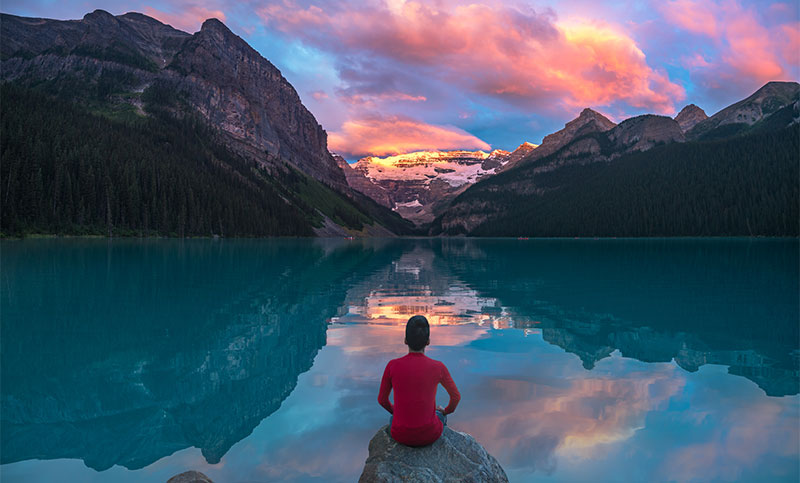
Next steps
There’s more learning ahead! As you work through the learning activities in Unit 2, keep in mind the chemicals and chemical reactions involved in climate change and what effect they have on Earth.
